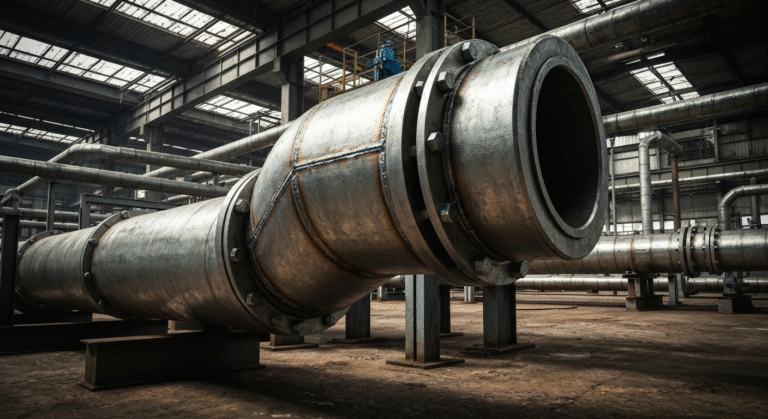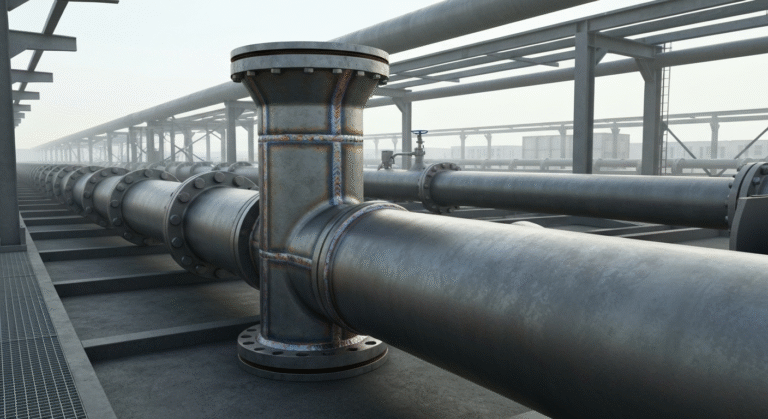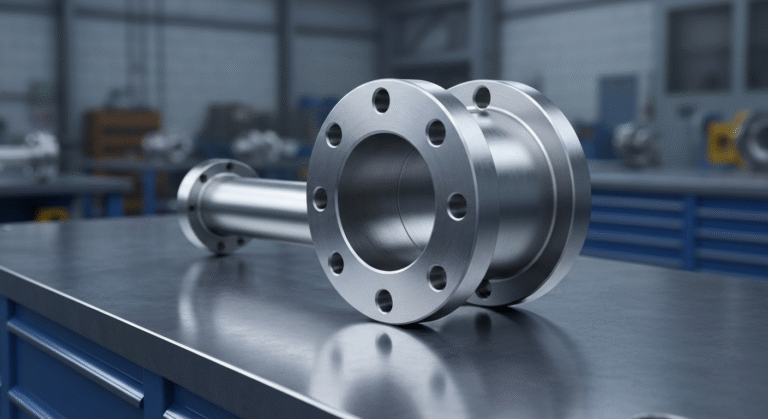-
Zona Industri Yinzhuang, daerah Mengcun, kota Cangzhou, provinsi Hebei, Cina

Perlengkapan Pipa Baja Tahan Karat Terbaik untuk Setiap Proyek

Sorotan Utama
- Stainless steel pipe fittings offer exceptional durability and resistance to corrosion, making them ideal for harsh environments.
Key types include threaded NPT fittings for secure connections and butt-weld fittings for high-pressure systems. Popular brands and suppliers of stainless steel pipe fittings include Parker Hannifin, Swagelok, Dixon Valve & Coupling, and Grainger, all known for providing high-quality stainless fittings for a range of industrial applications.
- Key types include threaded NPT fittings for secure connections and butt-weld fittings for high-pressure systems. You can find a variety of connectors, including elbows, tees, couplings, and flanges, to configure any piping system. Some popular brands and suppliers of stainless steel pipe fittings include Parker, Swagelok, Victaulic, and Smith-Cooper International, which are known for providing reliable fittings, connectors, couplings, flanges, and tees.
- You can find a variety of connectors, including elbows, tees, couplings, and flanges, to configure any piping system.
- Proper selection involves considering application (residential vs. industrial), sizing, and pressure ratings.
- Regular cleaning and maintenance are essential for preventing corrosion and ensuring the longevity of your stainless steel fittings.
- Essential components like valves, hose barbs, and plugs are readily available in stainless steel for complete system integrity.
Pendahuluan
When your project demands reliability and longevity, stainless steel pipe fittings are the go-to solution. These essential components are designed to connect, control, and configure piping systems in a vast range of applications. Known for their superior strength and resistance to corrosion, stainless steel fittings, including various connectors and valves, provide a secure, leak-free performance. Whether you’re working on an industrial-scale operation or a residential plumbing project, choosing the right stainless components ensures your system operates smoothly and efficiently for years to come.
Jenis-jenis Penting dari Perlengkapan Pipa Stainless Steel
What are the main types of stainless steel pipe fittings and their common uses? The world of stainless steel fittings is diverse, with each type designed for a specific function. You’ll find everything from elbows that change the direction of flow to tees that join three pipes together. Other common types include couplings for connecting two pipes, plugs to seal an opening, and flanges for attaching pipes to other equipment.
These connectors are the building blocks of any robust piping system. For instance, reducers connect pipes of different diameters, while cross fittings unite four pipes. Understanding the role of each component, like tees and flanges, is the first step in designing a system that is both effective and leak-proof.
Threaded Pipe Fittings: Features and Uses
Threaded pipe fittings are a popular choice for creating strong, reliable seals in many systems. These components, particularly NPT (National Pipe Taper) fittings, feature tapered threads that tighten to form a leak-proof connection. When you screw a male-threaded pipe into a female-threaded fitting, the tapered design ensures a secure fit, which can be further enhanced with a thread-sealing compound.
How do threaded stainless steel pipe fittings differ from butt-weld fittings? The primary difference lies in the connection method. Threaded fittings are screwed together, making them easy to assemble and disassemble for maintenance. This makes them ideal for lower-pressure applications and systems that may need future modifications.
You will often find threaded connectors in various forms, including:
- NPT/NPSM pipe swivels: Versatile connectors for various applications.
- Hose barbs: Used for connecting flexible hoses in low-pressure situations, typically under 300 psi.
- SAE J514-37 degree JIC fittings: Common in hydraulic systems for a secure metal-to-metal seal.
Butt-Weld Pipe Fittings: Strengths and Applications
In contrast to threaded options, butt-weld pipe fittings are welded directly to the pipe, creating a permanent and robust connection. This method results in a continuous metal structure, offering superior strength and a smooth, uninterrupted flow path. Because they become an integral part of the pipeline, butt-weld fittings are the preferred choice for high-pressure and high-temperature applications where leaks are not an option.
These stainless steel fittings are known for their exceptional resistance to heat, oxidation, and corrosion. Their strength makes them a cost-effective replacement for other materials in demanding environments like chemical processing or oil and gas pipelines. Common butt-weld fittings include elbows, tees, reducers, and caps, all designed to meet strict specifications for safety and performance.
Here is a quick comparison:
Fitur | Threaded Fittings | Butt-Weld Fittings |
|---|---|---|
Connection | Screwed together | Welded directly to pipe |
Kekuatan | Good for low-to-medium pressure | Excellent for high pressure |
Flow Path | Can cause some turbulence | Smooth, continuous flow |
Installation | Simple, no welding needed | Requires skilled welding |
Terbaik untuk | Maintenance-friendly systems | Permanent, leak-proof systems |
Choosing the Right Stainless Steel Pipe Fittings for Your Project
Selecting the correct stainless steel fittings is crucial for the success and safety of your project. What should I consider when choosing stainless steel pipe fittings for plumbing applications? Your decision should be based on the specific demands of your system, including pressure, temperature, and the type of fluid or gas being transported. The right choice ensures a leak-tight seal and long-term durability.
From flanges to couplings, each component plays a vital role. Taking the time to understand the unique requirements of your project will help you choose fittings that not only fit perfectly but also provide the performance you need. Let’s explore the key factors to consider for both residential and industrial settings.
Key Factors for Residential and Industrial Applications
Are stainless steel pipe fittings suitable for both residential and industrial use? Absolutely. However, the specific requirements for each setting differ significantly. For residential plumbing, the primary concerns are often corrosion resistance for drinking water safety and ease of installation. Stainless steel is an excellent choice as it does not release harmful compounds into the water.
Industrial applications, on the other hand, often involve much higher pressures, extreme temperatures, and corrosive chemicals. In these settings, the mechanical strength and specific grade of stainless steel (like 304 or 316) become critical factors. Forged fittings are often used in industrial environments due to their superior strength under high pressure.
When making your selection, consider these key points:
- Pressure and Temperature: Ensure the fittings can handle your system’s operating conditions.
- Ketahanan Korosi: Match the stainless steel grade to the environment (e.g., 316 for chemical exposure).
- Connection Type: Choose between threaded for flexibility or butt-weld for permanent, high-strength connections.
- Application: Select fittings designed for either general home use or demanding industrial processes.
Sizing and Pressure Ratings Explained
How do I correctly size stainless steel pipe fittings for my project? Proper sizing is fundamental for a functional and safe system. Fittings are typically sized based on the Nominal Pipe Size (NPS), which is a North American standard for pipes used for high or low pressures and temperatures. For example, threaded and forged fittings are commonly available in sizes from 1/8 inch up to 4 inches.
What pressure ratings are available for stainless steel pipe fittings? Pressure ratings indicate the maximum internal pressure a fitting can safely withstand. These ratings are crucial, especially in hydraulic and industrial systems. For example, stainless flange adapters often conform to SAE J518, which has specific codes for different pressure levels. It’s essential to match the pressure rating of your plugs, valves, and other fittings to your system’s requirements to prevent failures.
Here are some common sizing and pressure specifications:
Jenis Pemasangan | Common Sizes (NPS) | Example Pressure Ratings |
|---|---|---|
Threaded & Forged | 1/8″ to 4″ | 150# (Cast Pipe Fittings) |
Butt-Weld | 1/2″ to 48″+ | Varies by schedule and material |
Flange Adapters | Varies | Code 61 (3000 psi), Code 62 (6000 psi) |
Hose Barbs | Varies by hose size | Designed for low pressure (< 300 psi) |
Maintaining and Cleaning Stainless Steel Pipe Fittings
To get the most out of your investment, proper maintenance and cleaning of your stainless steel pipe fittings are essential. How do I maintain and clean stainless steel pipe fittings to prevent corrosion? Though stainless steel is highly resistant to rust, it is not completely immune, especially in certain conditions. Regular care helps preserve its protective layer and ensures its longevity.
A simple cleaning routine can prevent the buildup of contaminants that might compromise the material’s integrity over time. This proactive approach is key to avoiding potential issues and keeping your piping system in optimal condition for years to come.
Preventing Corrosion and Ensuring Longevity
The key to stainless steel’s durability is its passive chromium-oxide layer, which protects it from corrosion. For this layer to remain effective, the surface must be kept clean and exposed to oxygen. Contaminants like dirt, grease, or iron particles can trap moisture and chemicals against the surface, leading to localized corrosion or rust spots. Simple cleaning practices are the best form of prevention.
For general cleaning, use mild soap or detergent with warm water, and rinse thoroughly. Avoid using abrasive cleaners like steel wool or harsh chemicals like chloride-based cleaners, as these can damage the protective layer. By following a few simple steps, you can ensure your fittings remain in excellent condition.
To maximize the life of your stainless steel fittings:
- Regularly inspect and clean: Wipe down fittings to remove any dirt or buildup.
- Ensure oxygen exposure: The protective layer on stainless steel self-heals in the presence of oxygen, so keeping surfaces clean is crucial.
- Use appropriate tools: Avoid using carbon steel tools on stainless components to prevent iron contamination, which can lead to rust.
Kesimpulan
In conclusion, choosing the right stainless steel pipe fittings is crucial for ensuring the longevity and efficiency of your projects. Whether you’re working on residential or industrial applications, understanding the various types, features, and maintenance practices can help you make informed decisions. Stainless steel fittings offer not only durability but also resistance to corrosion, making them ideal for a range of environments. By investing in quality fittings and taking proper care of them, you can enhance the performance of your piping systems. If you’re ready to find the perfect fittings for your next project, don’t hesitate to reach out for expert advice or consultation!
For those looking to buy high-quality stainless steel pipe fittings online, reputable suppliers such as industrial supply websites, specialized plumbing retailers, and manufacturer marketplaces are excellent options. Always look for platforms that offer detailed product listings, customer reviews, and certified quality assurance to ensure you are purchasing reliable stainless steel pipe fittings.
Pertanyaan yang Sering Diajukan
Are stainless steel pipe fittings suitable for both home and industrial use?
Yes, stainless steel fittings are excellent for both. In home use, they provide safe, corrosion-free transport for drinking water. For industrial applications, their durability and ability to handle high pressures and temperatures make them ideal for demanding environments. The key is choosing the right grade and type of fittings, like couplings or flanges.
Apa keunggulan alat kelengkapan pipa baja tahan karat dibandingkan bahan lainnya?
The primary advantages of stainless steel fittings are their superior corrosion resistance, high strength, and durability. Unlike some other materials, they can withstand extreme temperatures and harsh chemicals. According to their specifications, they provide a long service life with minimal maintenance, making them a cost-effective choice in the long run.
How do I identify high-quality stainless steel pipe fittings when buying online?
When buying online, look for suppliers who provide detailed product specifications and documentation. High-quality stainless steel fittings, especially instrumentation-grade ones, should be fully traceable with Material Test Reports (MTRs) and Certificates of Conformance (CofCs). This documentation verifies the material quality and ensures the fittings meet industry standards.


